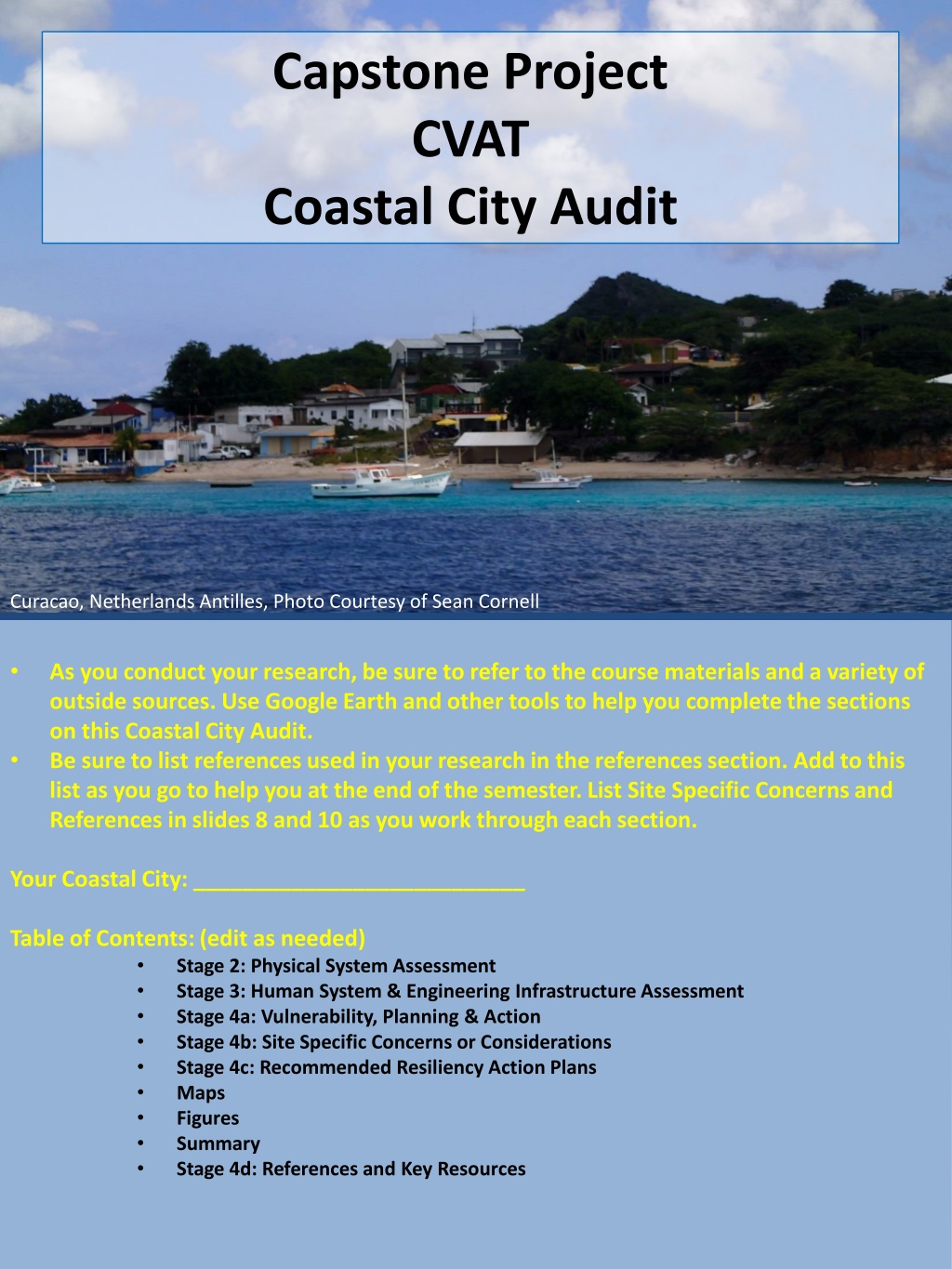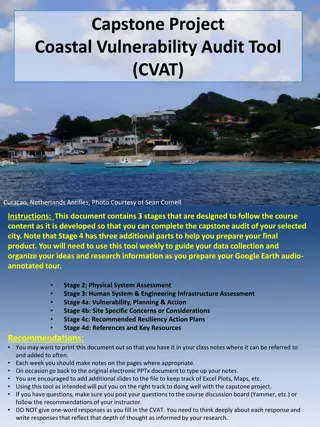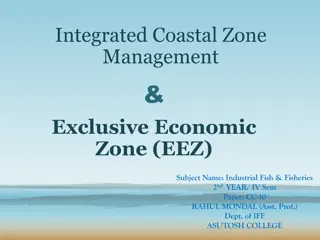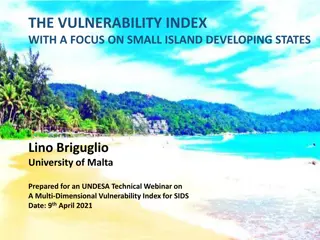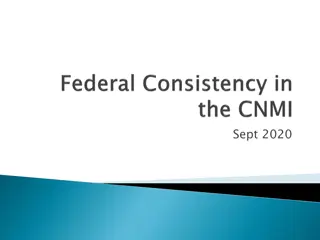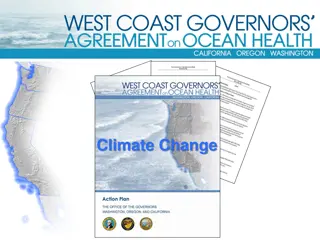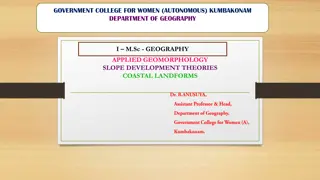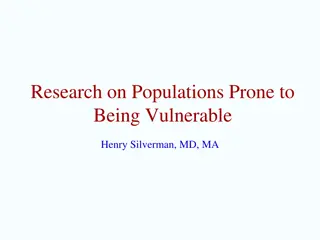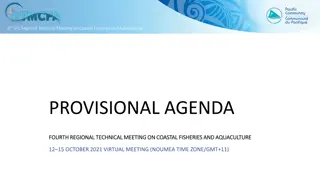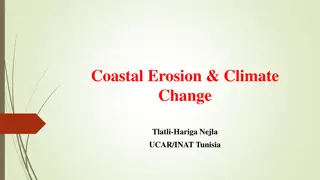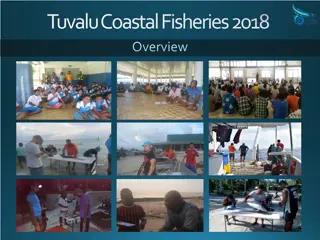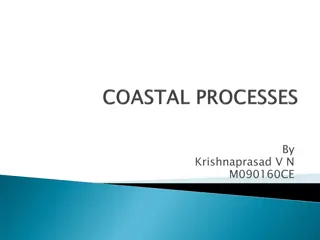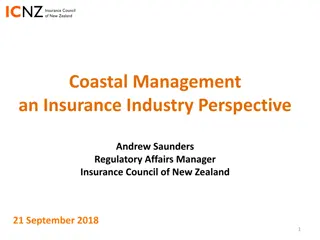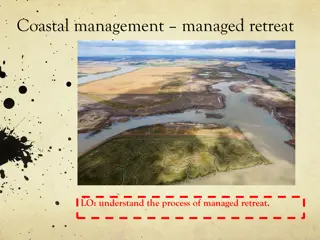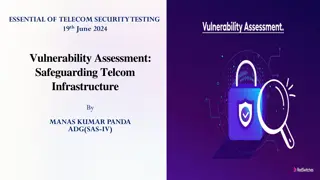Coastal Vulnerability Assessment of Curacao, Netherlands Antilles
Conduct a comprehensive Coastal Vulnerability Audit of Curacao, Netherlands Antilles, using the Coastal Vulnerability Audit Tool (CVAT) to assess physical, human, and engineering infrastructure systems, as well as vulnerability, planning, and resiliency action plans. Consider factors such as climatic setting, geomorphologic features, coastal processes, hazards, risk assessment, human population demographics, housing, cultural resources, and built infrastructure.
Download Presentation

Please find below an Image/Link to download the presentation.
The content on the website is provided AS IS for your information and personal use only. It may not be sold, licensed, or shared on other websites without obtaining consent from the author. Download presentation by click this link. If you encounter any issues during the download, it is possible that the publisher has removed the file from their server.
E N D
Presentation Transcript
Capstone Project CVAT Coastal City Audit Curacao, Netherlands Antilles, Photo Courtesy of Sean Cornell As you conduct your research, be sure to refer to the course materials and a variety of outside sources. Use Google Earth and other tools to help you complete the sections on this Coastal City Audit. Be sure to list references used in your research in the references section. Add to this list as you go to help you at the end of the semester. List Site Specific Concerns and References in slides 8 and 10 as you work through each section. Your Coastal City: ___________________________ Table of Contents: (edit as needed) Stage 2: Physical System Assessment Stage 3: Human System & Engineering Infrastructure Assessment Stage 4a: Vulnerability, Planning & Action Stage 4b: Site Specific Concerns or Considerations Stage 4c: Recommended Resiliency Action Plans Maps Figures Summary Stage 4d: References and Key Resources
Coastal Vulnerability Audit Tool (CVAT) Stage 2: Physical System Assessment City/Location Name Country State/Province Site Location (city center) Lat. Long. Climatic Setting Tropical, Sub-Tropical, Arid, Temperate, sub-Polar, Polar, etc. Geology: Tectonic Setting Is this coast on an active or passive boundary? Does it classify as a trailing edge or a collision coast or another tectonic classification? How close to a plate boundary? See Module 2: Topographic Profile (from inland to offshore) Use Google Earth to produce a profile with an accompanying map that will be placed in your final Coastal City Slides to illustrate the location of your city. Use the same method you used in Module 1 Lab. This profile should be used in your final product
Coastal Vulnerability Audit Tool (CVAT) Stage 2: Physical System Assessment (continued) Coastal Geomorphologic Features present. Describe the features you observe nearby: Barrier islands, barrier reefs, sounds, estuaries, mangroves, cliffs, sandy beaches, rocky coastlines, etc. See Module 2. Coastal Processes Is this coast emergent or submergent? Wave or tide dominated? See Module 2. Common Local Coastal Hazards Coastal flooding, storm surge, wave run-up, storm waves, shoreline erosion rates, landslides, etc.. Regional and Local Coastal Hazards Tsunami, hurricane/typhoon/cyclone, Sea Level Rise etc. Risk Assessment Low-Medium-High Risk to Hazards? How would you rate your city? See Module 1 for ranking of some world cities.
Coastal Vulnerability Audit Tool (CVAT) Stage 3a.: Human System Assessment Coastal Population Population Size, Demographic Distribution (including racial and ethnic breakdown, age, etc.), Per Capita Density. Income (poverty and wealth) Distribution. Residential Housing Shanties, Apartments/Condos, Single/Multi-story Single Family Homes, Density of housing, etc. Commercial Buildings Hotels, industrial buildings, manufacturing plants, retail, hotels, high-rise buildings etc. Notable Cultural Resources Important monuments, churches, historic buildings, museums, etc. Built Infrastructure Major Bridges, Roads, Highways, Piers, Port facilities. Utilities Infrastructure Water lines, electrical supply, sewer, etc.
Coastal Vulnerability Audit Tool (CVAT) Stage 3b.: Engineering and Infrastructure Assessment Shoreline Engineering Existing shoreline engineering strategies Surge Barriers, Seawalls, Groins, Levees, Jetties, etc. Flood Control Existing projects such as pumping stations, surge barriers, etc. Beach Management Existing beach re-nourishment etc. Non-traditional (soft engineering) shoreline protection Geotubes, bioengineering, etc. Coastal Ecosystem Restoration Wetlands, mangrove, Submerged aquatic vegetation (SAV) restoration, Reef/Living shorelines, dune restoration, etc. etc.
Coastal Vulnerability Audit Tool (CVAT) Stage 4a: Vulnerability, Planning and Action Exposure and Sensitivity of the Population What makes this city vulnerable in terms of its residents: How many people are at risk of coastal hazards? What makes this population sensitive (age, poverty, racial diversity, etc.) Refer to Module 10: Adaptive Capacity How prepared are the residents to adapt in times of crisis or disaster? Do they have adequate access to transportation for evacuation? Do most people have adequate educational attainment, income/wealth to be able to prepare and make the best choices? Does the community have strong social institutions that can support people during recovery, etc. Adaptation to Climate Change Does the city have a plan to adapt to climate change that includes such measures as relocation of some neighborhoods, sustainable building practices, managed retreat, etc. If not, what potential exists for these kinds of strategies?
Coastal Vulnerability Audit Tool (CVAT) Stage 4b: Resiliency Policy, Planning and Action Preparedness/ Response / Recovery Planning Does the city have a plan addressing coastal resilience? Does the plan include the stages of disaster planning? Does it include a long- term plan for sea level rise resiliency? If not, what potential plans could be developed, based on your research? Coastal Policy What specific policies are currently employed to reduce risks from coastal hazards: Zoning, building regulations, land use plans, building codes, planned retreat, etc. If you do not find any such policies, what potential policies can you identify? Potential for Smart Engineering How could existing engineering be retrofitted or improved to increase protection from coastal hazards and improve coastal resilience? What new smart engineering could be employed? Potential for new or improved ecological restoration Are there ways to use ecological systems to increase resilience? If not, what potential projects might be appropriate?
Coastal Vulnerability Audit Tool (CVAT) Final: Site-Specific Concerns and Considerations Make notes on this page as you go through the Capstone stages, so that at the end of the semester you can edit and finalize the list. This should include major concerns that come to your mind as you do your research, such as: This city has a large population or people living in poverty at or below sea level, putting them at great risk of sea level rise; or This city has a nuclear power station on a coast that is exposed to high risk of tsunami. Item 1 Item 2 Item 3 Item 4 Item 5
Coastal Vulnerability Audit Tool (CVAT) Final: Recommended Resiliency Action Plans What actions would you recommend to make your city more resilient to coastal hazards? These can include policy to increase adaptive capacity such as educational programs or help for sensitive populations such as the elderly, or they can be smart engineering ideas or ecological restoration methods. They could also include managed retreat in certain areas or other community planning initiatives. Add more as needed. Rank in order of priority. Consider factors such as: Likelihood of success, factoring in: The natural geology and geographic setting, human poverty, access to resources, costs and timeline considerations, etc. Action 1 Action 2 Action 3 Action 4
Coastal Vulnerability Audit Tool (CVAT) Final: References and Key Resources Add to your reference list throughout the semester. It should include references for all four stages of the Capstone. Write references in citation format (specific format is not critical). Include author(s), title, date, web link. You may include scholarly articles, news articles, databases, personal communications, etc. Please check the reliability of your source. Include at least eight references. Add more pages if needed. The more the better. Item 1 Item 2 Item 3 Item 4 Item 5 Item 6 Item 7 Item 8
